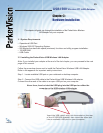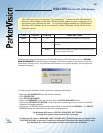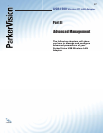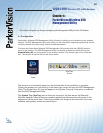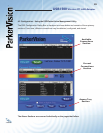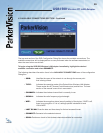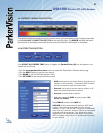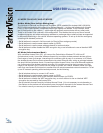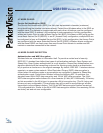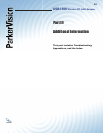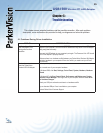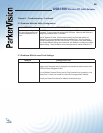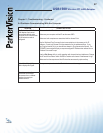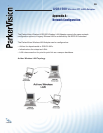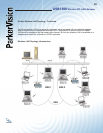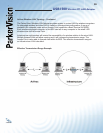
2323
USB1500 Wireless PC LAN Adapter
®
4.7 MORE ON SSID
Service Set Identifi cation (SSID)
The Service Set Identifi cation (SSID) is a thirty-two alphanumeric character (maximum)
string identifying the wireless local area network. ParkerVision-Wireless refers to the SSID as
network name. For stations to communicate with each other, all stations must be confi gured
with the same SSID. A wireless LAN consisting of nodes operating in Ad-Hoc confi guration
without an Access Point is called a Basic Service Set (BSS). All nodes in a BSS must use the
same Basic Service Set ID (BSSID). In an AP (Access Point) confi guration, multiple BSS can
be confi gured to form an Extended Service Set (ESS). In this confi guration, the Access Points
are confi gured with the same Extended Service Set ID (ESSID). Wireless clients confi gured
with the same ESSID can freely roam from one Access Point domain to another and still
maintain a seamless connection to the network.
4.8 MORE ON WEP ENCRYPTION
Authentication and WEP Encryption
Wireless links are vulnerable to information theft. To provide a certain level of security,
IEEE 802.11 standard has defi ned two types of authentication methods, Open System and
Shared Key. Open System authentication is a null algorithm. Shared Key authentication is an
algorithm where both the transmitting node and the receiving node share an authentication
key to perform a checksum on the original message. By default, IEEE 802.11 wireless devices
operate in an open system network. Wired Equivalent Privacy (WEP) data encryption is
utilized when the wireless nodes or access points are confi gured to operate in Shared Key
authentication mode. ParkerVision-Wireless utilizes the following 802.11b solutions: the
standard based 64-bit WEP data encryption and 128-bit WEP data encryption. The 64-bit
WEP data encryption method allows for a fi ve-character (40 bits) KEY. Additionally, 24 factory-
set bits are added to the 40-bit input to generate a 64-bit encryption key. (The 24 factory-set
bits are not user confi gurable.) This encryption key will be used to encrypt/decrypt all data
transmitted via the wireless interface. The 128-bit WEP data encryption method consists of
104 confi gurable bits. Similar to the 64-bit WEP data encryption method, the remaining 24 bits
are factory set and not user confi gurable.



